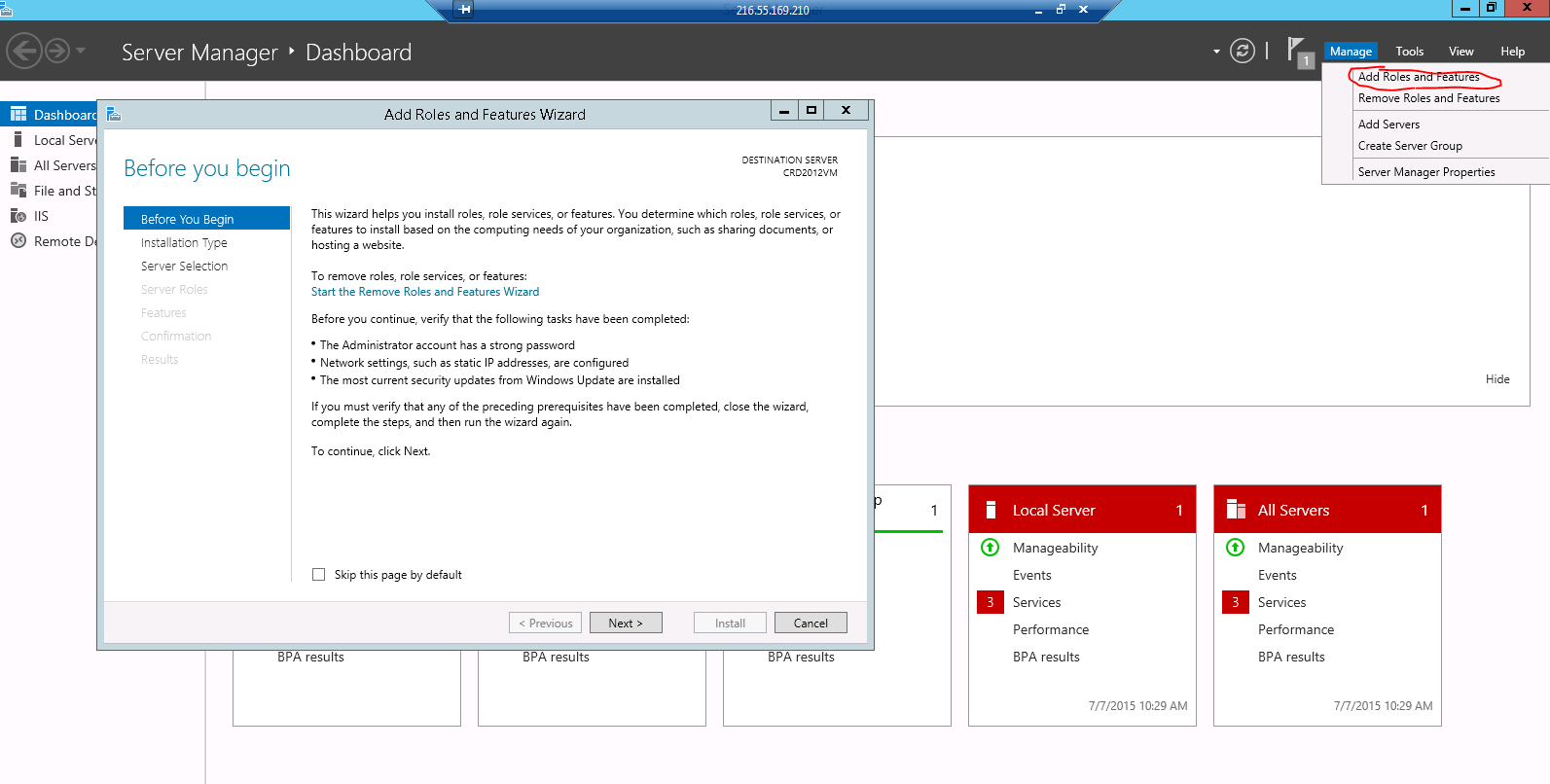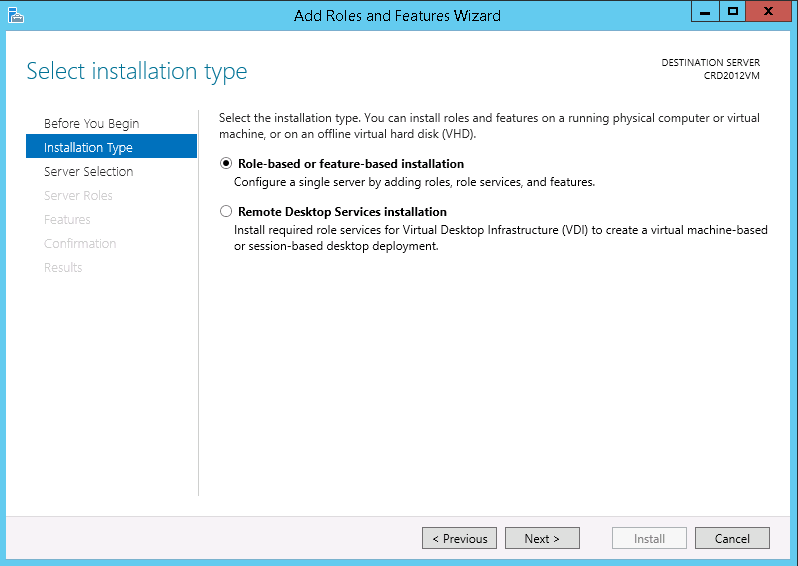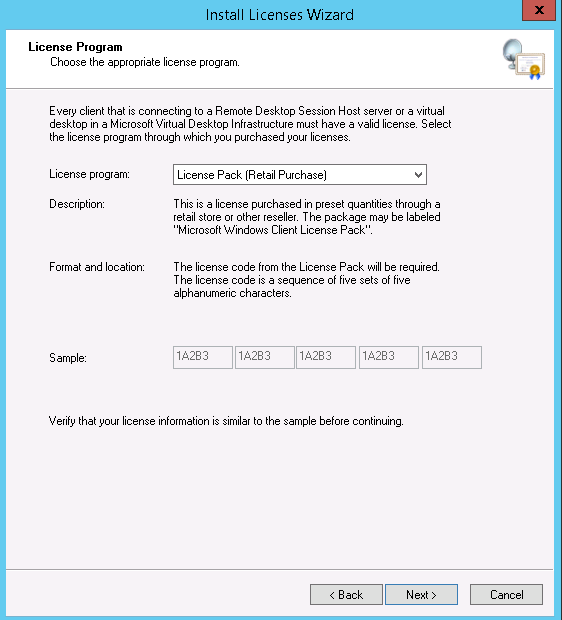This configuration, will provide desktop sessions to users based on the number of Remote Desktop Services client access license (RDS CALs) installed on the server, but will not provide access to RemoteApp programs or the RDWeb site.
Consideration for installing the Remote Desktop Session Host role service on a computer running Windows Server 2012 without the Remote Desktop Connection Broker role service.
The deployment of a Remote Desktop Session Host role service without the Remote Desktop Connection Broker role service adds certain requirements and considerations. Unless otherwise noted, the steps apply to both Workgroup and Domain Controller cases:
If the system needs to be configured as a Domain Controller, install the Active Directory Domain Service (AD DS) role service on the Server and promote as Domain Controller
For more information on how to install AD DS in Windows Server 2012, Visit the following Microsoft Web page:
http://technet.microsoft.com/en-us/library/hh472162
Install the Remote Desktop Licensing and the Remote Desktop Session Host role services using the following steps:
Open Server Manager
Click on Manage and select Add Roles and Features

Select Role-based or Feature-based installation
Under Remote Desktop Services, choose Remote Desktop Licensing and Remote Desktop Session Host role services. If Remote Desktop Licensing and Remote Desktop Session Host role services are not shown – install Remote Desktop Services and after installation and a reboot, they will be shown. Install these and reboot.
Add the License Server to Terminal Server License Servers group and restart the Remote Desktop service. You can add the server to Terminal Server License Servers group by opening licmgr.exe or From the server Manager > All Servers > Right Click on the Server and go to Remote Desktop Licensing Manager.

OR
Activate the License Server automatically from License Server UI (licmgr.exe). For more information on how to activate the Remote Desktop License server:
http://technet.microsoft.com/en-us/library/cc771547.aspx
Install appropriate RDSCALs.

For more information on how to install RDS CALs, visit the following Microsoft Web page:
http://technet.microsoft.com/en-us/library/cc725890.aspx
Choose the Retail Pack if you purchased them.
If the system is a Domain Controller, add the Domain Users group (or the specific list of users) to the Allow logon through Remote Desktop Services local group policy. To edit the local group policy object setting, follow these steps:
Open GPEDIT.MSC
Expand Computer Configuration, expand Windows Settings, expand Security Settings, expand Local Policies and then click User Rights Assignment.
Double-click Allow log on through Remote Desktop Services and then click Add User or Group.
Type the user account, click OK and then click OK
Close the Group Policy Object Editor.
Add the users you want to allow to connect to the Remote Desktop Users group.
For example: Domain Users. (On DC this will be in Built in groups). Configure the Remote Desktop Session Host role with to use the local Remote Desktop Licensing server.
Follow these steps:
Open an elevated Windows PowerShell prompt
Type the following command on the PS prompt and press Enter:
$obj = gwmi -namespace “Root/CIMV2/TerminalServices” Win32_TerminalServiceSetting
Run the following command to set the licensing mode:
Note: Value = 2 for Per device, Value = 4 for Per User
$obj.ChangeMode(value)
Run the following command to replace the machine name with License Server:
$obj.SetSpecifiedLicenseServerList(“LicServer”)
Run the following command to verify the settings that are configured using above mentioned steps:
$obj.GetSpecifiedLicenseServerList()
You should see the server name in the output.
Users can now initiate Remote Desktop Sessions to the server from any supported RDS client.


